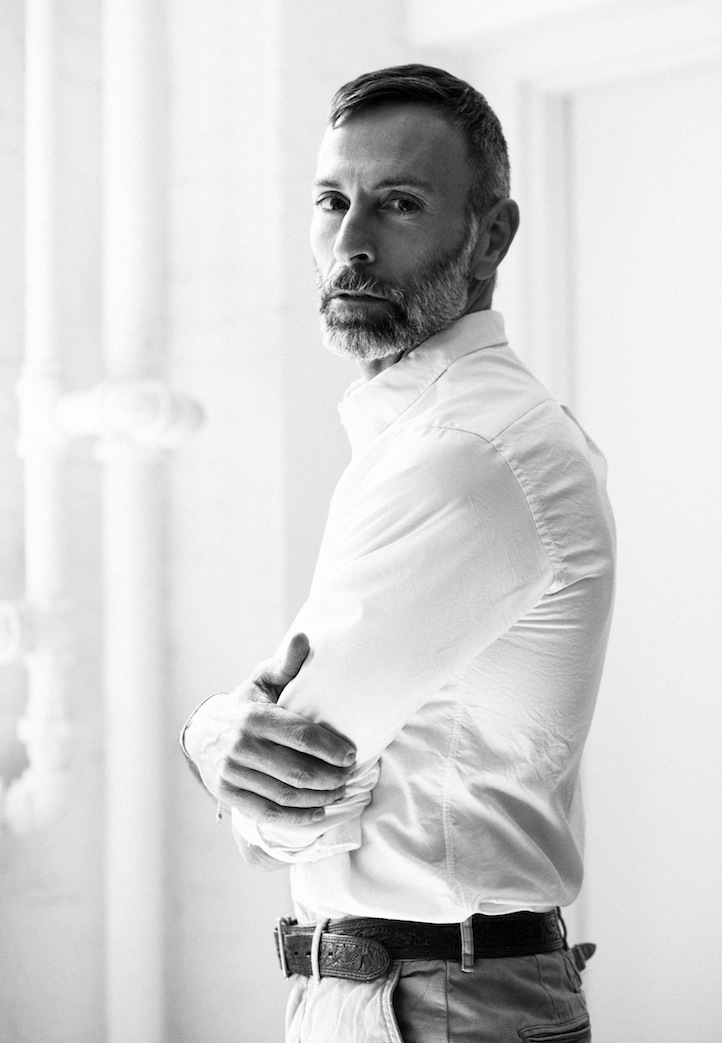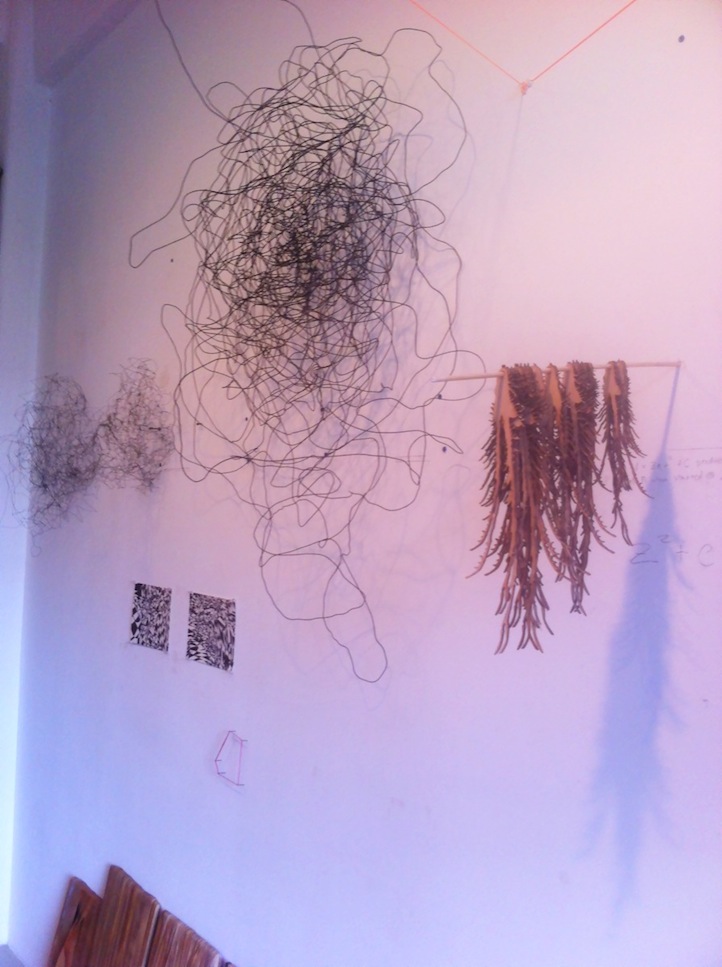The Artist Speaks: Mr. Joseph La Piana
09.18.2013
ART & DESIGN

Joseph La Piana, the celebrated New York City talent, wasn’t always comfortable with the term “artist.” In fact, it took him many years to embrace the label – gaining content as he honed his skills and developed a global reputation for his abstract pieces. Predominantly inspired through the relationship between light and kinetic energy (and in some capacity – text), La Piana thinks in layers – deconstruction, DNA, fragmentation. His creations aim to ignite thought; finding the correlations between previous bodies of works and pulling back the seams. Today, La Piana joins forces with Patterson, Flynn & Martin, the venerable custom carpet and rug boutique, on a collection of rugs inspired from landscapes near and far, from Amagansett and Central Park to St. Barths and St. Tropez. Days before the collaborations reveal, La Piana invited Life+times into his Chelsea studio as he spoke about the method and terms behind the construction of his distinguished pieces.
Life+Times: You were born in Brooklyn. Have you ever spent time living outside of Manhattan? Los Angeles?
Joseph La Piana: I lived in California for a little bit from 1990 to 2000. I loved it when I was there. It’s an interesting place. It allows you to lead a fluid lifestyle. I think people get caught up in the minutia of beautiful weather and what not. But, that doesn’t dictate anything about my existence regarding where I could live.
L+T: You’re a self-taught artist. How do you define that?
JLP: To me, it means I didn’t go to a school or art program where my undergraduate studies were related to art. I come from none of that – zero. My dad was an artisan; he was a construction worker where he built buildings in Manhattan. I come from a blue-collar family. I’m proud to say that.

L+T: When did your career as an artist really kick it into high gear?
JLP: When I moved from Los Angeles from New York, that’s when I feel like my artistic career took off. I was getting one of my pieces framed. It was a piece I made and while I was getting it framed a woman was there who asked if she could buy it from me. I told her that I wasn’t really an artist and it wasn’t for sale and on the spot, she wrote me a check for $300. I never cashed it and that was that. I haven’t seen her since, but that was when I had the courage to move forward.
L+T: What impresses you?
JLP: Those who are smart and work hard and have created something for themselves – I’m not impressed by those who just toss money around. It’s not my thing. It was never my thing growing up and still to this day, I stand by that mentality as well.
L+T: Are you comfortable with the term artist?
JLP: I don’t dislike it now. Back then it made me uncomfortable because it made me feel as if I was an imposter. I didn’t feel comfortable saying I was something that I felt I hadn’t proven myself at. Still, many years later, I am comfortable saying I’m an artist and I feel comfortable defining myself as one….but that is many years later.
L+T: Where does your passion stem from?
JLP: I think it comes down to my heritage and my background. My parents really had to make something of themselves when they were growing up – very focused and very hard workers. For me, I set my mind to doing things. I believe in the power of self-manifestation. I think the ability to think and believe and visualize can often become a reality. That’s been a very effective way of going through my life. It takes as much energy to be negative as it does to be positive. That being said, I’m a positive guy, but I can be hard on others and myself. What I mean is that I speak the truth. If you’re my friend or someone that is close to me, you have to be prepared to hear the truth. It goes both ways, I want to hear it as well.
L+T: Tell me about the use of light. Where does it stem from? It seems to be a theme throughout your creations.
JLP: Light really began in my earliest body of work – what I refer to photonastic works – where I extracted light formations from previous bodies of works and worked with fragments. I took fragments from other bodies of works and injected them into others. I use the terms DNA and deconstructing a lot in my pieces, because that’s what I do a lot of. I like the term deconstruction because I enjoy the process of breaking apart anything – getting to know someone, getting into someone’s head, what turns them on and what makes them tick. I apply this to my work as well.
L+:T: There seems to be a sexual component to your pieces as well.
JLP: There’s always this breakdown of extraction and mental capabilities. People who have curated my works notice the sexual element as well. I did a text project with the Warhol Museum that had to do with fragmenting dialogue – in the way we communicate with one another and how our minds break down that data. It’s about breaking things down.
L+T: Tell me about the series of “movement drawings” that you worked on.
JLP: This series was about taking a medium (being a liquid dye) and pouring the dye randomly on a perpendicular plane and then through gravity and suspension, the final effect was revealed. It stemmed from an original drawing that I eventually brought to life. To me, things are always growing into something else. Like people, from where we start to where we end – it’s a whole process of evolvement. This goes back to the whole idea of deconstruction, yet again.

L+T: Now tell me about the kinetic work – the kinetic paintings that are so often spoken about.
JLP: With the kinetic paintings, I used my breath or compressed air to create each kinetic form. I took graphite powder and almost traveled it with a flat ruler and started smearing it on the surface. From there, I sealed it and put another layer on top and then used shellacked based ink. This series of work was based on our historical weather patterns and forms. It’s a one dimensional surface but two dimensional in its appearance. It takes you in. It doesn’t just stop at the surface.

L+T: Why do you think that everyone focuses on the kinetic body of work?
JLP: I think there’s a vortex movement that draws you in. It’s an abstraction that I feel is unusually unique to my work. Like any artist, you develop your conceptual way of thinking that is very indicative to you as an artist. I think people are comfortable with these pieces.
L+T: To me, while looking at your work, it seems like there are layers upon layers to your creations.
JLP: It’s true, and that’s sort of how my mind works as well. When I see something, I’m very good at visualizing something and bringing it to life. When I bring it to life, I’m not at all surprised as to how it turned out, because I could envision the final outcome. It’s a blessing and a curse because in some ways it takes away the mystery. From there, I continue to deconstruct it more and more and more.
Photo Credit: Gregory Vaughan





